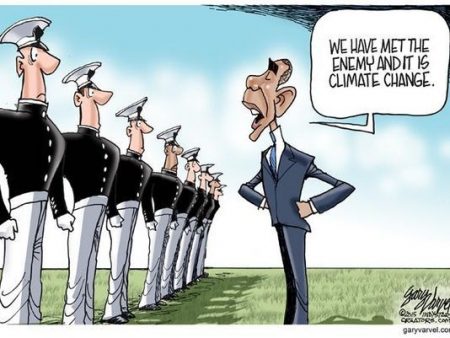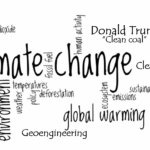March 20, 2018 – If anyone believes that the Paris Climate Agreement signed in 2015 solved the problem of global warming for succeeding generations I would want to know what he or she is smoking. The flawed agreement that saw almost every nation on the planet sign on not to exceed an upper limit warming target of 2.0 Celsius (3.6 Fahrenheit) while promoting a more aggressive one of 1.5 Celsius (2.7 Fahrenheit) as a more desirable outcome.
The agreement was non-binding. That meant any pledged carbon emission reduction targets could be altered as circumstances changed. Mechanisms to achieve carbon reductions were top down, not bottom up. So we heard about putting a price on carbon pollution, a euphemism for a carbon tax. And we heard about market-driven initiatives called cap-and-trade. In Canada, the province of British Columbia even before the Paris meeting had put in place an escalating price on carbon in the form of a tax that was deemed to be revenue neutral. The province of Quebec joined a cap-and-trade market with the state of California. Ontario followed Quebec. Cap-and-trade sets pollution maximums for each industry sector and each business within that sector. If a business exceeds its cap it has to buy carbon credits from other companies that are below their caps. As a cap-and-trade system progresses allowable pollution maximums decrease, a stimulus for companies to implement pollution reduction strategies.
Whether the price put on carbon is a tax or a cap and credit system, both represent how governments currently are addressing the primary agent of global warming, carbon dioxide (CO2). But for the individual citizen, all they see is a tax applied when they go to refuel his or her automobile. It’s just another tax. It doesn’t feel like it has anything to do with combating global warming.
Where are governments failing in their first attempts to combat climate change?
They are failing to educate and involve the average citizen. They are doing this because a consumption tax, such as a carbon levy of several cents on a liter of gasoline or diesel fuel, largely remains hidden from public view. So the average citizen isn’t directly engaged in the battle to fight rising temperatures, sea levels, and extreme weather events.
Is this because government is afraid to be candid about climate change when talking to citizens? Or is it because government fears to lose the next election if it directly engages citizens by announcing transparent policies?
I think it’s both. Climate change, global warming, and the social and economic cost of combating it is nothing short of war. During a war, governments ask citizens to make sacrifices. Governments mobilize resources, establish rationing, call on loyalty and national pride to rise to the occasion, and establish a national purpose that transcends the normal. Wartime austerity is accepted as necessary.

There is a difference between climate change and global warming, and war. In war, no one needs to be educated about the enemy. But with climate change and global warming, education of the public is a necessary first step to alert citizens to the existential enemy.
Gettting Started Requires an Educated Citizenry
Without an educated citizenry, no response to climate change will be sufficient. That really should be where governments begin their efforts to combat global warming. A few years ago UNESCO published a paper on this very subject. In the publication, it described four programs aimed at preparing the next generations for climate change. There was nothing for the current generation as if we are all past the point of no return in understanding the implications of our past actions.
Like all UNESCO initiatives, the document is broad in vision and short on specifics. It talks about strengthening primary and secondary school education programs on climate change and sustainable development. It advocates for enhanced teaching approaches and for raising awareness about climate change in non-formal education programs “through media, networking, and partnerships.” UNESCO, in its education for sustainable development initiative, has created a Global Action Program (GAP) aimed at accelerating the reorientation of education and learning to ensure a sustainable future. But it is hard to find any government that is putting GAP into practice. GAP focuses on climate change, biodiversity, disaster risk reduction, and sustainable consumption and production. In its educational program, it is amassing learning content, developing a pedagogy for multiple learning environments, and a method to measure learning outcomes. The end goal is a societal transformation so that those exposed to its materials can “transform themselves and the society they live in.” Through GAP it is hoped that the following outcomes will emerge:
- Enabling a transition to greener economies and societies.
- Equipping learners with skills for “green jobs.”
- Motivating people to adopt sustainable lifestyles.
- Empowering people to be “global citizens” who engage and assume active roles, both locally and globally, to face and to resolve global challenges and ultimately to become proactive contributors to creating a more just, peaceful, tolerant, inclusive, secure and sustainable world.
The challenge, in the short term, is to get everyone thinking about being a global citizen. It would be great if all of our government officials focused on climate change immerse themselves in the UNESCO program and find ways to engage the public to the degree that the United Nations is proposing for classroom education.
Do we need to turn our public broadcasters into educational forums? Do we need to get private broadcaster buy-in to the national objective?
I would say “yes” to both. We in the West understood the objectives of winning the “Cold War” even though we fell short of the ultimate objective, a peaceful world. We now need the educational establishment to plant the seeds, while scientists, engineers, and humanitarians create the set of tools to help us win the “Warming War,” a conflict we cannot afford to lose.
In the next installment of this series I will introduce you to tools in addition to the carbon taxes and carbon cap-and-trade already described here, tools that can help us put a stop to and maybe even reverse the warming.









